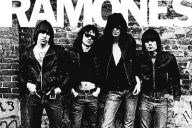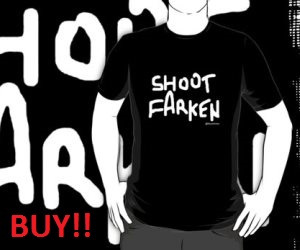Most ears only hear a succession of disconnected blips, bleeps and whooshes. Occasionally, a disembodied voice floats in reciting an apparently random piece of text in a foreign language. Swedish maybe? Is that a man barking or just the sound of an organ note compressed and modulated?
I spent a lot of time at the turn of the century listening to such things.
And I still do now and again, when I need my earbuds tickled in a peculiar way.
It was an old-fashioned record store. The type that existed in the suburbs before vinyl went into a coma and re-emerged as boutique. This record store was in Burwood, a mundane eastern suburb of Melbourne, up the road from Deakin University, where I was doing my best to delay adulthood.
I can’t even tell you its name. It was on the Burwood Hwy.
The gent who owned the store was older, not especially gregarious, but courteous enough. The store had no real specialty that I could discern. Maybe older jazz. I certainly bought many excellent old jazz records there: Duke Ellington, Count Basie, Louis Armstrong, etc.
There was nothing cool about the place. It was a grim reflection of what’s left of your record-buying habit when all the youthful trappings are stripped bare. When you reach that point where your friends and family start to look at you askew because you’re still buying records.
You’re meant to be a grown man.
And then, to top things off, you start listening to what sounds like squirrels burrowing for nuts while a factory explodes.
My ears were jaded at the time by the music I had been listening to solidly for a decade – alternative, indie, punk, garage rock – and I had been slowly drifting into more esoteric terrain.
Hell, if listening to the Butthole Surfers from the age of 15 wasn’t a gateway drug … well, here I was, in my late 20s and listening to the sounds of croaking frogs and dysfunctional spaceship motors for kicks.
This was in the funny little period we can now see as ‘peak CD’: people had replaced their vinyl and cassettes with CDs by the late 90s; Napster launched in 1999, ushering in the era of downloads, MP3 blogs and eventually streaming, but it was still not a common thing.
Vinyl was gathering dust in crates. People were buying CDs. The internet was still called the “information superhighway”.
We can now see the compact disc was not the uncrushable and pristine object of digital storage perfection we’d been sold by the record companies and audio equipment manufacturers. It was just a limited storage medium waiting for cloud computing and streaming technologies to catch up.
In the meantime, lots of people had traded in their old records for the whizz-bang wonder of these shitty silver drink coasters. So at the time you could still pick up incredible vinyl records for $5 or less in non-descript stores like the one in Burwood. Records like Music for TAPE/BAND – Musik from Sweden.
It was around this time too that plenty of record stores were closing down or slowly dying. This was the fate of the Burwood store as well. And while this was an objectively sad, though inevitable, result of the economics of the second-hand vinyl record store sector circa two-thousand-zero-zero, it also meant there were plenty of bargains to be had.
Let me regale you with a few of the records I bought there for under $5:
Harry the Hipster, Digs Christmas LP – Harry “the Hipster” Gibson was a bona fide old school jazz hipster from the 1930s, the type that had a beard when that sort of thing got you beat up. His big hit came in the 40s with a song called “Who put the Benzedrine in Mrs Murphy’s Ovaltine”. (This is an interesting little article about the forgotten history of Benzedrine, commonly known as “bennies”.) On this Christmas album, Harry digs on some Yuletide tunes with an extra helping of eggnog, probably laced with bennies.
Music of the Carousel LP – This is a recording of popular fairground carousel tunes from the early 1900s played on organ. If you want to scare your neighbours, put this on and sit quiet and still at a window, smoking a cigarette. Can’t find this on YouTube, but it sounds sort of like this.
Work’s Many Voices Vol 2 LP – Among other gems, this collection of songs about work, or as the compiler calls it “a laborlore vocumentary”, includes “Mindworker”, a song written in 1980 by Californian teacher Paul August. This is how the liner notes describe the song: “Mindworker treats teacher/student conflict in the ghetto. This reggae-flavoured number conveys work’s most democratic promise.” Sure it does.
Music of the Tukano and Cuna Peoples of Colombia LP – These are field recordings of ritual music by an Amazon tribe made in the early 1960s by ethno-musicologists Brian Moser and Donald Taylor. Sit in a dark room with your best friends, ingest some hallucinogens and be carried away by the haunting sounds of “armadillo skull whistles and pelican wing-bone flutes”. See which one of you comes out alive.
Music for TAPE/BAND – Musik from Sweden LP – “The production of electronic music in Sweden is manifold and, both technically and artistically, very advanced.” The Swedes could’ve stopped at ABBA, Ace of Base and the Hellacopters and I would’ve been happy with their contribution to modern music. But then they went and made this as well.
Music for TAPE/BAND is a compilation of Swedish electroacoustic music and sound poetry from the late 1960s/early 1970s. Think of it as black metal minus the corpse paint and guitars but with added Ingmar Bergman dread.
Electroacoustic/avant-garde music can be a slippery thing to listen to, and even harder to critically assess and understand. However, listen to “Eufoni” by Arne Mellnas and drift into space, far, far away from the comforts of Earth, alone and waiting for your last breath. Think of your dead body, entombed in a spacecraft, floating through emptiness for eternity.
This shit’s for real and you better find a way to deal with it.
The record store in Burwood closed down. The shop space was taken over by a futon store. Futons were big back then.
I put Music for TAPE/BAND on the record player. I’m floating in deep space, staring into the vinyl abyss.
Support your local record store on Record Store Day, April 18.
















